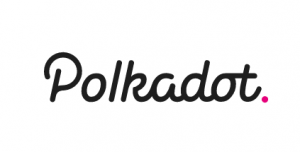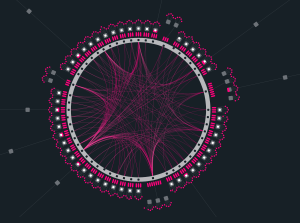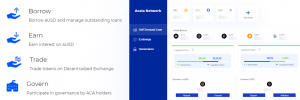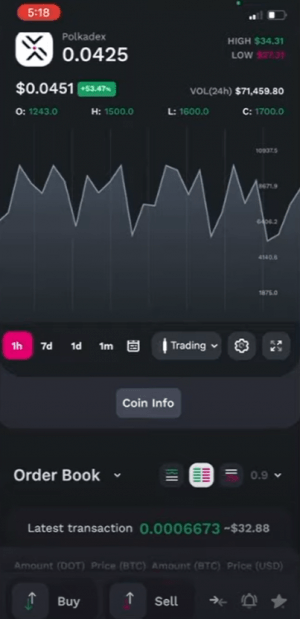

Polkadot has been a rising start in the blockchain industry during its short tenure. And it’s not hard to see why the network has gained so much attention: Founded from key members of Etherium, Polkadot was designed to overcome the congestion and high gas fees, and innovates blockchain in a way that lowers both cost and technical barriers to entry. With the recent announcement of the first parachain slot auctions, it is a good opportunity to review the Polkadot ecosystem and take a look at several examples of projects fully utilizing Polkadot’s value proposition.
What is Polkadot?
Before we dive in to see these examples, let’s review what Polkadot is and why it’s different from the thousands of other blockchains operating today. Simply put, Polkadot is a multi-chain network that acts as a relay between blockchain projects. It connects to these different networks and uses its ultra-efficient architecture to ensure security and fast transactions (clocked at up to 1,000 per second). Networks can attach to Polkadot by bidding for and winning “slot auctions.” Here they bid DOT, the Polkadot currency, which is held as a staked bond for as long as the chain is connected. These connected chains are called “parachains”, as they run in parallel with the Polkadot relay chain.
Why would another blockchain project want to connect with Polkadot? There are a number of reasons, but the biggest is due to specialization. By connecting to Polkadot, individual projects can take advantage of excellent security and transaction speeds. They will also have easy connections to other projects on Polkadot, and bridges to external networks such as Bitcoin and Ethereum. By doing this, project teams can focus more on the exact functionality they want out of their product, benefit from a more efficient process (both during and after development), enjoy greater security than most teams could develop on their own, and even develop their project faster through the use of Polkadot’s modular building framework called Substrate.
Think about it like this. In a housing building, each occupant could choose to supply their water by carrying buckets up to their apartment. If they did so, however, they would end up spending much of their day finding, collecting, carrying, and filtering each bucket—instead of doing the things they would rather be doing. Instead, residents pay a small fee to a water company, which brings filtered water all the way to their taps. Polkadot provides this to blockchain projects with speed, accessibility to other chains, and with security. Moreover, Polkadot leaves the governance of each project up to its members, so even though they are tied to a larger chain, they are still independent.
Imagine how much extra time you would have after you switched from collecting your own water to turning on water service. For blockchain projects, it is much the same feeling, and there are already a number of examples showing the impressive innovation that can occur when teams are focused on their value proposition instead of the necessary but distracting parts of building a blockchain project. We will look at three key examples here: Acala, Polkadex, and Kusama.

Acala
The Acala project, currently set up as working Testnet, is the all-in-one DeFi hub of Polkadot. The platform is compatible with Ethereum and features the use of smart contracts and out-of-the-box cross-chain capabilities. It was built with Polkadot’s Substrate and takes advantage of the ecosystem’s superior speed, security, interoperability, and bridging.
Key features:
- Trustless staking derivative (liquid DOT), allowing users to release their staked DOTs as fungible, liquid assets that extract the derivative value.
- A stable currency, the aUSD, that is multiple-asset-backed and decentralized. It is stable by design (1 Acala Dollar = 1 US Dollar) which allows for low cost, low risk transfers globally.
- Financial services that include loans, earning interest, trading tokens, and—for those staking with Acala’s utility token ACA—an opportunity to participate in governance.
- Plans for a decentralized Sovereign Wealth Fund (dSWF), which would create a self-sustaining model that would hold a reserve whose yield would fund R&D efforts, parachain placement, and ensure the project is healthy and growing for many years.
- Results from the Testnet have been very impressive, including:
- 90k+ community members
- 1,300+ nodes
- 30+ ecosystem partners
- 45k accounts
- 615k signed transactions
- 52M USD testnet Total Locked Value
Acala has blended itself seamlessly with the Polkadot ecosystem and is poised to gain a large community quickly.


Polkadex
The team at Polkadex used Substrate to build DEX that blends the best of centralized exchanges (speed and ease-of-use) and decentralized platforms (borderless, secure, scalable). It is an orderbook-based cryptocurrency exchange that will be a parachain on Polkadot in order to offer its users the ability to bridge to external networks.
Key features include:
- Utilizes a fluid switch protocol between orderbook and AMM for matching orders.
- For staked users, additional benefits include the ability to deploy on-chain trading bots for algorithm based trading.
- For high frequency traders (bots and non-bots alike), Polkadex has a significant advantage over competing exchanges because of Polkadot’s incredibly high transaction speed. This advantage will be held for some time as Polkadot’s speed will continue to scale in ways that other ecosystems are unable to given their architecture.
- Layer 2 Trusted Execution Environment (TEE). This is key for ensuring cryptographic proof of transactions, prevention of hacking/theft, and enables users to keep their funds on the exchange without worrying.
- Fiat flexibility by enabling traders to purchase crypto using a credit card.
- The decentralized KYC option gives traders the choice of storing their personal data in the wallets instead of on the platform, complying with regulations while maximizing privacy.
The Polkadex team recently posted a demo video for their app, showing the ease-of-use and impressive functionality. You can see the demo here.


Kusama
The Kusama network has made headlines and history in its role as “canary” (think of a canary in a coal mine, sacrificing itself to alert for danger) in order to ensure that the Polkadot parachain auctions and deployment are seamless and disaster-free. In June 2021 the first live parachain was deployed on Kusama, and though it was an empty shell (appropriately named “Shell”), it validated the parachain concept that defines Polkadot’s most promising feature. After testing for several weeks, the first value-added parachain was added, chosen through a common-good process vs. the auction based process that will follow. The parachain, Statemine, will allow holding and transferring KSM, transferral of permissioned fungible assets, and the permissionless creation/issue/transfer of assets (fungible and non).
Kusama will act as a pathfinder for the Polkadot network, and as its processes from the first parachain are being actively audited, it has already completed the first of many auctions for a parachain slot. The winner of the first auction (a modified candle format) was Karura, which is a DeFi hub that will act as a counterpart to Acala, which runs on the Polkadot ecosystem and even shares the same code.
This journey will allow Kusama to provide the ultimate canary for Polkadot, with additional value being created as more and more parachains win auctions and join the Kusama ecosystem. It will also pave the way for the auction slot methodology, helping project teams better understand what is required to compete for and win slots to onboard their blockchains.

A bright future
Polkadot has changed the crypto paradigm with its unique ecosystem structure. By offering low gas fees, solid security, and extremely fast transactions, the parachain methodology will allow teams to focus on those unique innovations they are excited about for their blockchain project. They will be able to develop quickly through Substrate, gather community support and win an auctioned slot, then take full advantage of the significant benefits offered as a parachain.





















